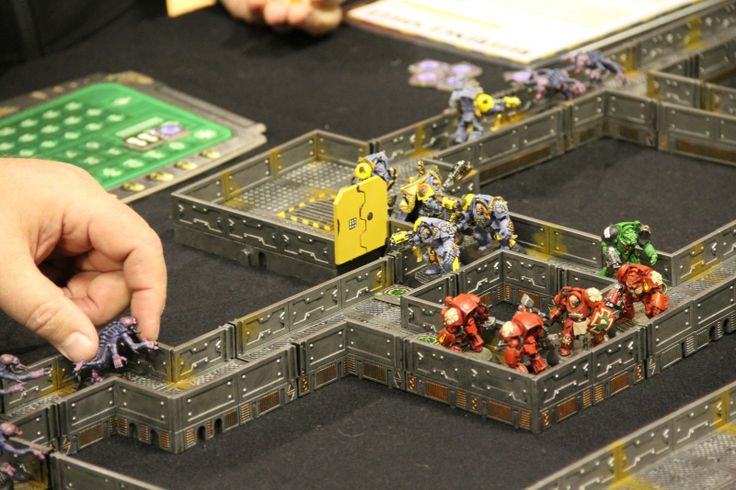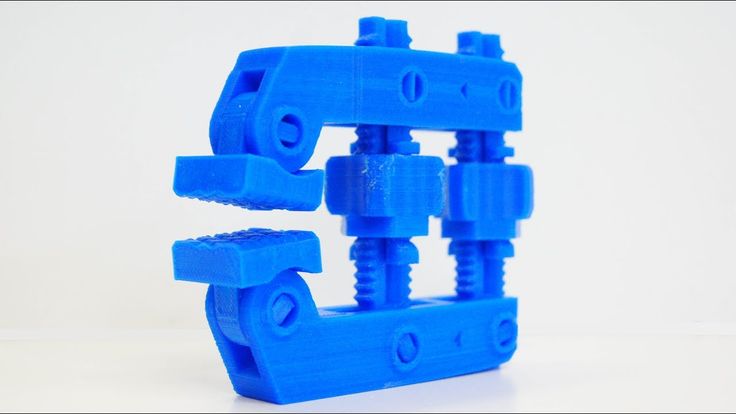3D printer games workshop
Games Workshop Opens the War Against 3D Artists
report this ad
report this ad
It’s raining Cease & Desist letters as Games Workshop has been going after 3D artists en masse lately if the rumors are to be believed.
As some of you may have seen recently a prominent 3d Modeler was given a cease and desist letter from GW about one of their models and is vowing to dispute it. So it looks like the stage may be getting set for another showdown similar to the Chapterhouse Vs. Games Workshop case from 2013.
Games Workshop Opens the War Against 3D Artists
As it turns out it looks like a lot of artists also received similar notifications from GW lately in what many are calling a targeted campaign by them against 3d artists worldwide.
That got us thinking about how the copyright laws really have changed and what’s actually infringement and what’s not. Recently, there have been some changes in the laws, and a few big lawsuits from large companies have also changed how issues like these are handled now.
Disputes with miniatures are harder than most objects. Mainly because they are all so complex and based on things that have “already happened.”
How do you say you came up with a space robot? How do you say someone copied your space robot, and it’s too similar to theirs? Well, that’s what we’re going to try and get to the bottom of today for you!
We’ve included some videos as well because sometimes it is better to hear things from the experts themselves!
With 3D printing growing every day in the tabletop gaming space, its laws are evolving to protect products and brands, but those same laws do leave room for the big guys to push around the smaller ones a bit. Let’s get into it!
Copyright Issues in the Age of 3D Printed Models
Duncan Shadow is the creator currently under the microscope. His recent public posts say that GW contacted MMF to take down the model above. They say it is “identical” to one of their miniatures. Obviously, it has differences, as well as similarities to the Eldar Revenant Titan, and in his opinion does not contain a trademarked symbol.
Here’s a pic of his full model:
Here is a pic of the Forge World Eldar Revenant Titan:
Does this mean GW is starting to crack down hard on creators? Or do they just send out as many letters as they can since they are fairly cheap and the majority of people will just take the sculpts down? It’s hard to tell, but let’s look at a recent copyright case and what some experts have to say about the current state of copyright laws.
The Adidas Case
A trademark is about protecting from customer confusion. In a recent case, (he talks about it at the 2:34 mark) Forever21 was sued by Adidas by simply having three stripes on some shorts, (like something you would expect to see on a pair of Adidas shorts).
Seems quite crazy, however, Forever21 settled out of court as many experts believe they would have lost this case. So shorts with 3 stripes on them is sometimes all it could take for a judge to enforce a trademark.
When you look at Adidas, that is their main symbol. With GW, however, the question is how can they really say every miniature, devoid of symbols, is infringing? Still, if it is deemed close enough to cause confusion among customers, it’s possible that based on this example, GW would win the battle if it went to court.
With GW, however, the question is how can they really say every miniature, devoid of symbols, is infringing? Still, if it is deemed close enough to cause confusion among customers, it’s possible that based on this example, GW would win the battle if it went to court.
It’s all if they can prove it is confusing their customer base to think it could be their model. Especially since 3D artists are working in the same medium. If you transferred a design to a shirt or even a poster/ patch/pin etc, instead of miniature, it would, perhaps, be harder to prove infringement.
According to the US Copyright office:
Works are original when they are independently created by a human author and have a minimal degree of creativity. Independent creation simply means that you create it yourself, without copying.
So a defense against “copying” would be to show that you (the artist) created something completely independent.
Which has always been a sort of gray area in the 3D model space where some artists create 1:1 ports of popular GW models, some like Duncan seem to be inspired by them, while other artists go even further create something completely different but still 100% usable on the tabletop by hobbyists.
For example, if you did a scene for scene re-shoot of Star Wars but used glowing katanas instead of lightsabers and called it “space ninjas” that would likely be considered copyright infringement.
If you re-shot it as “Star Whores” and made it into a porno that only loosely followed the script, that would probably fall under the “parody” exception to copyright. (probably…)
The other item Duncan mentioned, trademarks, is a little different. Branding is related to trademark law, which is somewhat different. The double-headed Aquila, for instance, is probably trademarked, so that has stronger protection since that’s “the brand” and not just a particular design.
What This Means for Platforms
In a very recent law, which was made to protect places like YouTube from Copyright issues, Section 230 of the Communications Decency Act protects platforms from what its users do.
So part of the CDA “safe harbor” provisions is that the service provider (MMF in this case) is protected from liability if they take potentially “bad” things down once they’re notified of it.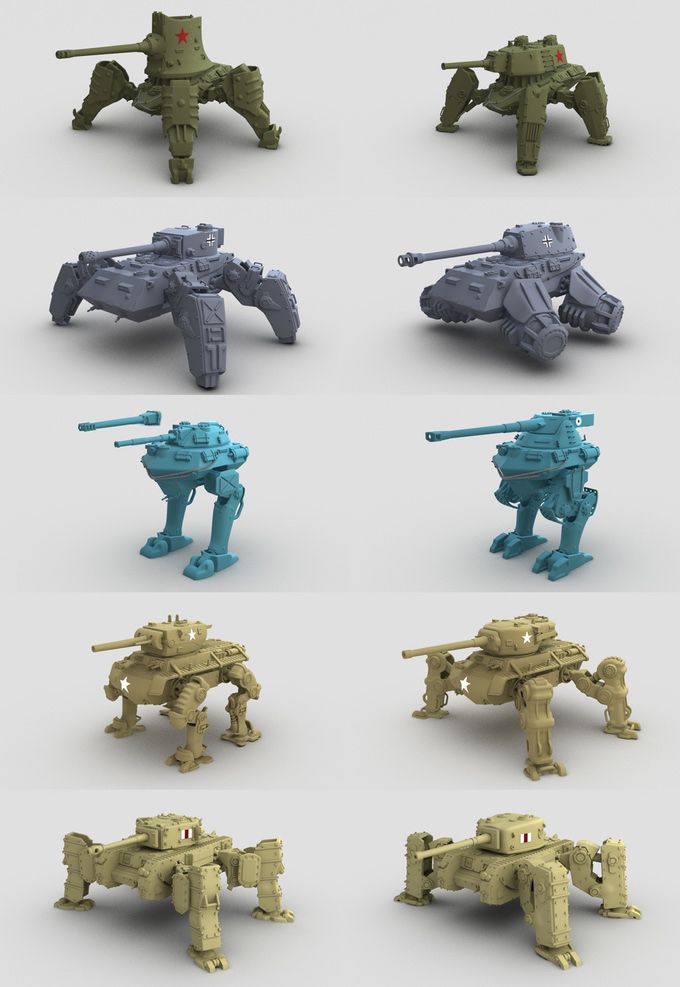 I.E. this design, which it seems that Duncan may dispute with GW.
I.E. this design, which it seems that Duncan may dispute with GW.
In the case above, My Mini Factory is most likely protected from any actions that GW is taking against Duncan. So the good news is, places like MMF (or Cults, etc) will generally be affected little by claims such as these as long as they themselves comply with any requests like the one they received by GW.
In summary, seller platforms cannot really be attacked directly, as long as they don’t create the content. But, and a big but, they have to take down the items once notified. So if they do not take down the models after notification, then they could get into trouble as well.
Why This is All Super Relevant Now
Congress recently passed the 2021 Appropriations Act, which according to Norton Rose Fulbright makes it easier for any brand, large or small to take action against any they believe is “infringing” on their works.
For companies, the 2020 Trademark Act:
- Improves the ability and consistency for obtaining injunctions against infringers by restoring and codifying the rebuttable presumption of irreparable harm where a likelihood of confusion is shown;
Since the act passed, it is overall good for smaller content creators but does leave room for the big guys to hassle them. When looking at something like the Adidas case, it may not look too good for some artists.
When looking at something like the Adidas case, it may not look too good for some artists.
That is because with some miniatures, regardless of the use of a trademark or not, it may not be that hard for someone like GW to prove that something could very well create confusion among customers as to where it comes from.
But again, it all comes down to the judge if it is too derivative or totally of an artist’s own actual creation. Even experts like Legal Eagle are not 100% on anything at this point since the new act has become law.
Models are Hard
Miniature disputes are hard, as it’s the same medium as GW’s core business. If their legal team can establish that an artist’s customers are their customers, and the sale of those models hurts them and their brand just like the Adidas example above- they may have a case.
We’ll have to see if GW cracks down harder with the new laws or if the little guys can win some because it honestly can go either way depending on the “art,” medium, and judge.
Either way, if an artist gets a letter to cease production, oftentimes, it’s just easier to comply because the court fees can be astronomical at that scale, and a long-drawn-out court battle against a giant company is never easy.
So what does this mean for 3D artists going forward?
Well, the only way to be totally safe would be to create something that potentially could not be mistaken for a Games Workshop miniature and still be super dope to the plaint and play with on the tabletop (like this DemonSlayer-Knight).
Even Games Workshop is Using 3D Printing for Faster Minis
You may not know this, but GW has been using 3D printing to produce most of the painted models they have been showcasing for at least 7 years. These models can be seen everywhere, from previews to digital files on Warhammer Community and even in the supplement books themselves.
The reason? It is so much easier just to print out a file instead of waiting for all the plastic to get in. With all the minis getting such great paint jobs, they need to get the miniatures to the painters early to get them ready for previews, etc. So, they just print a few out for them, and the perpetual cycle of GW releases continues.
With all the minis getting such great paint jobs, they need to get the miniatures to the painters early to get them ready for previews, etc. So, they just print a few out for them, and the perpetual cycle of GW releases continues.
But, if they can print out 3d minis, they also have the files hanging around somewhere.
Turns out they definitely have some 3D model files archived in their computers that could, at some point in the future, be transformed into sellable downloadable products. Obviously, this isn’t happening soon, because they would first have to find a way to control how the files were used and distributed.
Check out some of the stuff that GW looks to have 3D printed in the past, present, and future…
The First 3D Printed Model We Noticed: Taurox Prime
Back in 2014, the Taurox Prime was previewed and released. We think this is the first time we saw GW use 3D printing for their finished model prototypes.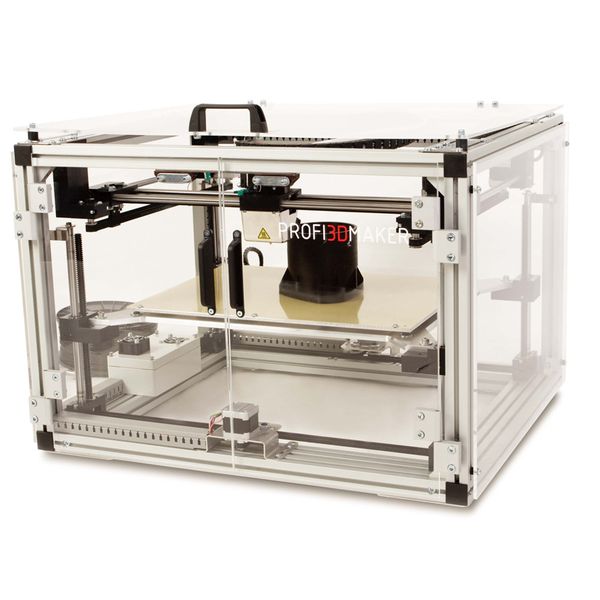 You can tell by clear issues on the model that is still posted on GW’s Webstore. The quality of the model in the picture appears to be much less than what their plastic injected models can produce.
You can tell by clear issues on the model that is still posted on GW’s Webstore. The quality of the model in the picture appears to be much less than what their plastic injected models can produce.
First off, you can tell that the tracks are slanted at something like a 15-degree angle to the right. On top of that, the autocannons on the sides look to fit a little wonky. You can see a clear gap on the right gun even.
At the front of the vehicle, you can still see the tracks angled completely off from the rest of the chassis and the assault cannons have something in some of the barrels.
Finally, the track guards are bent and malformed. You can see a clear bowing of the back guard compared to the front. Now keep in mind, that they never sold a model like this. This was just used to preview their product ahead of time.
3D Printed Minis We’ve Spotted
Picture from Garro at GSC Showcase From Warhammer New Years Open Day
Looking at the Locus in a case from an event preview, you can see striations at the top of its hood. While this could be just some weird kind of drybrush, it is a bit odd that the effect doesn’t appear in Warhammer Community’s preview online?
While this could be just some weird kind of drybrush, it is a bit odd that the effect doesn’t appear in Warhammer Community’s preview online?
Looking at GSC’s official picture of the Locus, it looks like the striations from the top of the hood are gone. Could this be the fact that the pictures have been “cleaned up” with some simple editing? Some striations still appear on the robe next to his staff which is indicative of 3D printing, however, they are a lot more subtle than what was spotted in the display case. Better 3D printing technology and painting techniques help to keep the printing lines to a minimum.
This is definitely a lot better than the Taurox from 2014.
Next, the new exclusive Sister of Battle Sister Novena also appears to have some of the same tell-tale 3D printer striations that indicate the painted model was also a 3D print.
And lastly, looking at the newly previewed Iron Hands character, you can see striations all over his weapon.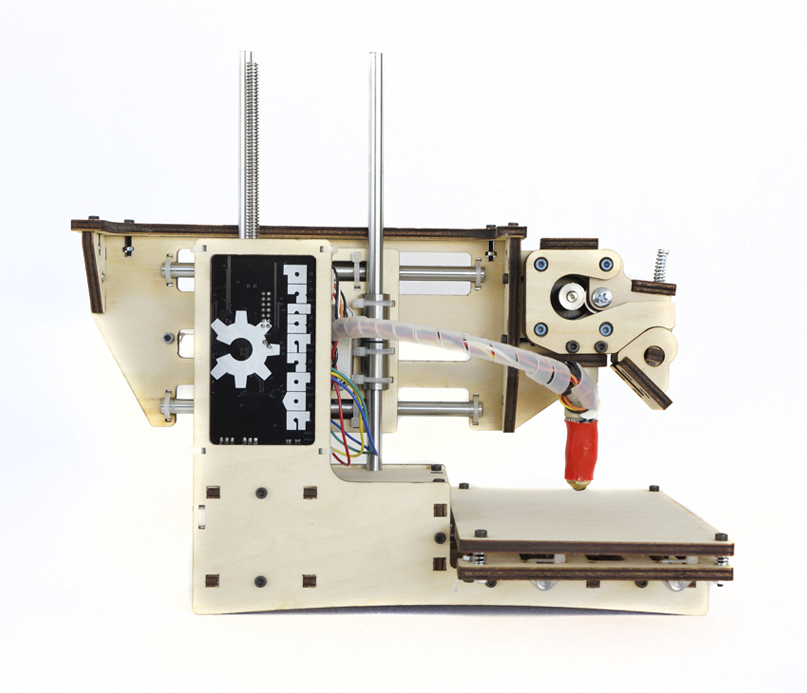
First, at the top of his axe where the flat area behind the blade is as well as the vice-grip-looking counterweight on the other end. Looking at the bottom of the weapon, the battery pack that makes the thing a power weapon is also showing some striations on its side.
The Latest Minis We’ve Spotted
You can see some of the lines on this look very 3D printed, but with the Ad Mech stuff still a while away, it only makes sense they would just print a few out instead of making a bunch to paint up.
The mold lines on this are very strong in the highest points compared to the rest of the mini.
Lelith was one of the most obvious of newer releases with the random hard mold lines, some things off-kilter, and the issues in the dagger. This one used for the preview was definitely 3D printed.
Why 3D Printing Makes Sense
Without going too far into detail, 3D printing makes sense because it’s just faster for rapid prototyping. Looking at GW’s standpoint, they have to get their models ready ahead of time so they can have pictures for their codex, box kits, previews, etc. It takes a fraction of the time printing off a 3D sculpt in-house vs having materials sent off for plastic injection.
Looking at GW’s standpoint, they have to get their models ready ahead of time so they can have pictures for their codex, box kits, previews, etc. It takes a fraction of the time printing off a 3D sculpt in-house vs having materials sent off for plastic injection.
It seems like GW is printing off a “master-prototype” model that they use in all of their promotions while the main product is getting amassed.
Obviously by the time these products make it to market they are the actual material(s) they are supposed to be and do not have the 3D print marks on them (well except Forge World, which a whole separate post altogether).
Do you think Games Workshop has started to crack down on the 3D printed miniatures space?
Let us know in the comments of our Facebook Hobby Group, and make sure you enter the latest monthly giveaway for FREE today! You can also support us on Patreon and get ad-free access to the site, plus a ton of minis that helps support some of the best creators out there
If you buy something from a link on our site, we may earn a commision.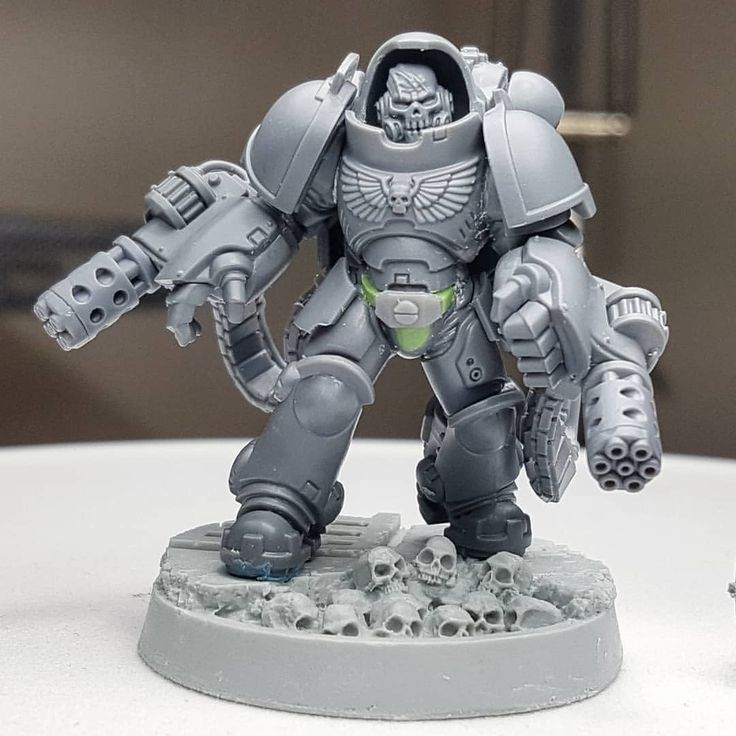 See our ethics statement.
See our ethics statement.
Virginia Restless, Miniature Painter & Cat Dad. I blame LEGOs. There was something about those little-colored blocks that started it all... Twitter @catdaddymbg
Games Workshop Vs Cults 3D - The 3D printing War heats up
Please Note: This site uses affiliate links. Our affiliates are shown in the sidebar on the homepage
For many who are new to 3D printing, Cults 3D has swiftly become the go-to resource for numerous Warhammer-compatible parts. Forget Thingiverse, I think that those of us in the know can agree Thingiverse died a long time ago. But Games Workshop – via their lawyers – has formally requested the removal of over 200 specific models from the Cults 3D platform. And Cults all but said “no”.
Click this link & buy your hobby stuff from Element Games for the UK & Europe to support FauxHammer.com – Use Code “FAUX2768” at the checkout for double reward points.
15% off Phrozen with code: “22PRFHDP15“
Our Affiliates / Hobby Stores
- UK: Element Games, The Outpost, Wayland Games, Mighty Lancer, Goblin Gaming, Forbidden Planet, Model Scenery Supplies, eBay, Amazon
- US/Canada: MTechCave, GameKastle, eBay (US), eBay (CA), Amazon
- Germany: Taschengelddieb
- Europe: eBay (DE), eBay (FR), eBay (ES), eBay (IT), Amazon
- Australia: eBay, Amazon
- Global: RedGrass Games, Warcolours
- 3D Printers: Phrozen 3D
Games Workshop Vs Cults 3D – What happened?
Reported first on Spikey Bitz, the following images have made their rounds on various social media channels. Over the past few days, Spikey Bitz contacted Cults 3D to confirm that these screenshots are a legitimate statement from Pierre at Cults3D
Over the past few days, Spikey Bitz contacted Cults 3D to confirm that these screenshots are a legitimate statement from Pierre at Cults3D
You can read this statement in its entirety both above and below. We’ve copied it below in text form, but are unable to confirm which discord channel this is from specifically.
Hello @everyone, this is Pierre, co-founder of Cults. I’m posting here to inform you that Games Workshop has just contacted us through their lawyers to ask us to remove more than 200 creations that infringe according to them – on their copyright. In this list, there are 65 paying models that we have rejected. The users who are part of this list and who have at least one creation rejected from the site will be informed by email. They will be able to edit their model to remove the copyrighted terms. If the editing is sufficient, the creation will be accepted again Of you need to modify an URL just contact us on hello(eccults3d.com) Concerning the free models, we have decided not 0 &tete them because of the notion of fan art and we’ll keep fighting on this point.

From now on, we have a (rather long) list of terms that will trigger moderation when your paid creations are uploaded. So try to avoid as much as possible these terms when uploading (I attach the document). If there is a problem, you will receive a message informing you that your model violates the rule and you can edit it without worrying until it is good.
We prefer to be perfectly transparent with you about Games Workshop’s request because we are convinced that it is by working together (creators, platforms and brands) that we will make cool things happens.
If you have questions or remarks, please just let me know, I’ll do my best to reply!
Pierre Cults3D
I’ll get onto this “list” in a moment, but this explains a couple of steps that GW have taken in regard to protecting their IP. Essentially – via their lawyers – GW has advised Cults 3D of over 200 models which they claim infringe GW’s copyright trademarks. And, as a result of this, Cults have, for lack of a better term, disabled visibility and access for just 65 of them.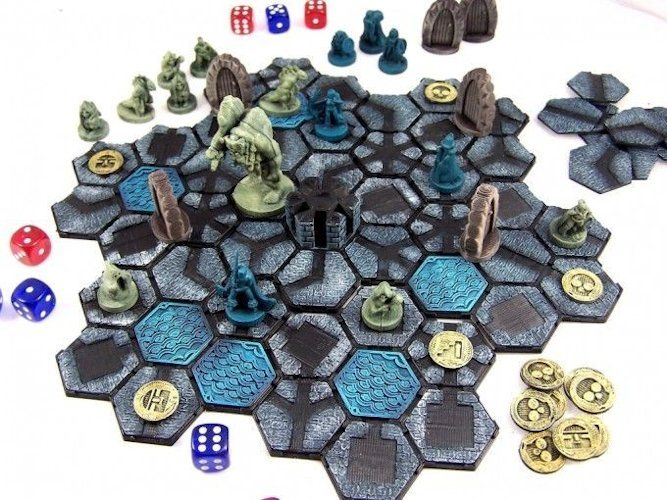 Specifically, just the ones where creators are charging people to download them.
Specifically, just the ones where creators are charging people to download them.
This article is part of our Best 3D Printers for Miniatures Article.
To see the full list of 3D printers check out that article.
Games Workshop Vs Cults 3D – Cults 3D’s Position
In this battle of David and Goliath (or Goliath and a slightly smaller Goliath, who knows what Cult’s financial war chest looks like?), despite the slightly passive-aggressive tone I’m inferring from this, it’s easy to side with Pierre and co. Purely on behalf of how open they are being with us and what they are doing to protect their community of creators.
They have claimed to be actively fighting GW on the non-profit models on the grounds that they are fan art. Now, I’ve no idea of the legalities here, but I don’t believe there is any legal precedent set on the creation of 3D models, so if this does reach a courtroom, we could actually (finally) see some rules put in place. (Yay! to having a bloody clue what the rules are)
Cults have also stated that they have informed the creators of these 65 models what specific “terms” (again I’ll get onto the “list” in a mo) have been laid out and advised them on what to change in order to re-upload the models to get them back on the platform. I’m inferring by the comment here that it’s only specific names used which have been challenged. And nothing has yet been specifically challenged purely on the style of the model itself…
I’m inferring by the comment here that it’s only specific names used which have been challenged. And nothing has yet been specifically challenged purely on the style of the model itself…
Whilst they will not openly publish the full list (heaven knows why), they have shared it in this discord (which we can’t access) and advised that any files uploaded containing these terms will be flagged for moderation and the creator will be informed that the terms used are in violation, but, it appears, not which term is in violation specifically.
The creator can re-upload as many times as they like whilst changing the terms (guessing the names) and once the violating terms are removed, the chargeable model will be allowed online.
I think this is signed off perfectly where Cults have said that they want to be open because “only by working together can we make cool things happen”.
Update: We reached out to Cults 3D and they have advised that this was originally shared in a private Discord Channel for 3D modellers. The list provided (below) is a truncated list they put together to help inform creators, the full list is far larger and would be too complicated to moderate (I still kinda want to see it)
The list provided (below) is a truncated list they put together to help inform creators, the full list is far larger and would be too complicated to moderate (I still kinda want to see it)
The designers who have had their models removed will not be publically shared. so if you know a designer and model affected by this, please let me know as I;d love to feature them as a case study on this situation to help figure it out.
Additionally, Cults advised that they have limited what they will openly discuss on this topic to the statement above or future similar advisements. I infer that due to the nature of legal proceedings that this is necessary because sites like ours can misinterpret comments which are then spun in court. Which is why I’d like to state right now that all of this is based on my uneducated opinion of the situation.
Games Workshop Vs Cults 3D – The list of Infringing Terms
Again thanks to Spikey Bitz (and now from Cults themselves) we have a truncated list of terms which have been floating around online, we have reached out to Cults 3D for the full list.
- Games Workshop
- Warhammer
- Sigmar
- 40k
- Adeptus
- Drukhari
- Necrons
- T’au
- Ynnari
- Idoneth
- Khaine
- Kharadron
- Lumineth
- Seraphon
- Sylvaneth
- Khorne
- Tzeentch
- Slaanesh
- Maggotkin
- Skaven
- Nighthaunt
- Ossiarch
- Mawtribes
- Gloomspite
- Behemat
- Necromunda
- Imperialis
- Ultramarines
- XV107
As Rob noted in his article, these are the De-Tolkienised terms used, where terms like orks are now Orruks in GW speak, and Eldar are Aeldari to help protect the IP.
GW obviously own much more than the list here, and as is indicated in the article, the full list contains many more terms than what is shared above.
In the UK at least you can see what trademarked terms a company owns by looking at the relevant page on the GOV.UK website, though this doesn’t seem to cover many of the terms used here. Does anyone know where we can find a comprehensive list of GW Copyrighted terms If so, let us know in the comments below?
Who knows?
I mean, we can safely assume that Games Workshop doesn’t like the idea of 3D printed models. They have built a global brand around producing miniatures and models that currently earn them millions each year. They have a huge company now with thousands of staff members across the globe. I live in Nottingham, and you can hardly drive down 3 streets without finding at least one GW employee. All of these people need to get paid. So any threat to their main product line will be taken very seriously and rightly protected for the sake of their whole business.
Before we talk about 3D printing miniatures specifically, just consider that any company making miniatures is a potential threat to GW. But I think the reason that this is such a big deal, is because GW has made its name by providing us with the most-detailed miniatures going for a good few decades.
But now 3D printing has come along and you can print models with more detail than what GW currently provide. They are cheaper to purchase, considering that you buy a file once (unless it’s free) and can print a model, or models, for literal pence, as many times as you want. And again, with more detail than what you can get from GW or Forgeworld.
But GW is more than just models. They have huge and rich lore behind the product offering with a whole hobby arsenal, an easy-to-follow painting system, along with a huge media-spanning product range and services.
GW will and should rightly protect their IP,
But what they have done here (so far) is ask for all models that contain specific terms to be removed.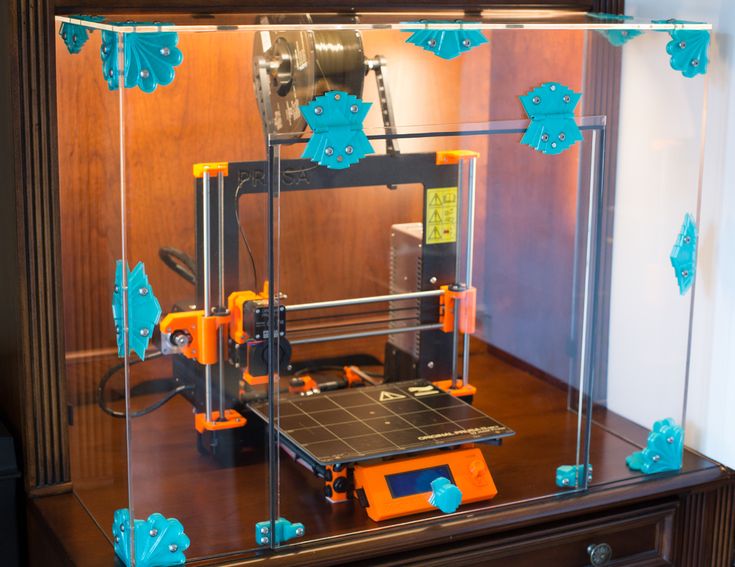 But I’ve just checked a few creators who charge for models and there’s still things like a (almost 1:1) recreation of the Horus Heresy Kratos tank on Cults.
But I’ve just checked a few creators who charge for models and there’s still things like a (almost 1:1) recreation of the Horus Heresy Kratos tank on Cults.
In fact, Just searching Cults 3D for “Warhammer” shows me what is clearly a Predator on page 1 of the search results. And it’s a file you need to pay for.
Is this because Cults have not done what they said, or have GW simply not provided that model in their list of infringing models, and Cults have only removed those specifically identified by GW?
Is “terminology” all GW can strike for? Models which use specific terms in the names? Because that will soon be worked around when people rename direct copies of “Space Wolves” to Sci-Fi War Dogs” or “40k” to “40 Thousand” or some such.
I expect that GW does not want us to know the specifics, because when the lines are black and white rather than grey, it potentially opens up the floodgates for designers to creep our of the woodwork of uncertainty and fear, by just directly working around these rules.
This is not the first move GW has made against 3D printing, again from Spikey Bitz. they informed of a takedown request from GW on MyMinifactory asking them to remove Duncan Shadow’s Elf Titan.
Elf Titan – Duncan LoucaRevenant Titan with Pulsars – Forge WorldWhilst some changes have been made here, the lamen can clearly spot the direct similarities between these models. Duncan is an incredibly skilled sculptor and his newer creations, which bare no GW product similarities at all, are mind blowingly awesome – to me at least, this above model screams blatant rip-off. And Duncan’s creation, which I feel is more aesthetically pleasing, is a potential loss for GW of £254 revenue for every customer who intended to get the Aeldari Titan but instead got Duncan’s version.
Whether you love or hate GW, ask yourself honestly. is this practice even morally ok?
(the result of the situation above is that Duncan released his model for free and whilst no longer available free or otherwise via MyMiniFactory – some minor google-fu will find it in no time)
Nevertheless, Its Game’s Workshop’s actions (or lack thereof) in this area of the hobby which makes me wonder, “WHAT ARE THEY DOING?”
Sure they’ve requested takedowns of a few specific creator models on other platforms previously. And here they appear to have just asked Cults 3D to remove models which use specific Warhammer (probably trademarked) terms… I wonder, is what they are doing enough? It does not appear to me that they have done it anywhere near as much as they could. Were it my job to look into this I could comfortably find thousands of models online with likenesses to GW products. So “can” GW claim copyright infringement on the basis of a model’s style alone? They did with Duncan Louca above on MMF. But was the takedown simply due to MMF’s lack of appetite to challenge the house of Warhammer?
And here they appear to have just asked Cults 3D to remove models which use specific Warhammer (probably trademarked) terms… I wonder, is what they are doing enough? It does not appear to me that they have done it anywhere near as much as they could. Were it my job to look into this I could comfortably find thousands of models online with likenesses to GW products. So “can” GW claim copyright infringement on the basis of a model’s style alone? They did with Duncan Louca above on MMF. But was the takedown simply due to MMF’s lack of appetite to challenge the house of Warhammer?
Unfortunately though, because 3D printing exists, fans will create copies and if they are not publically available on places like Cults or similar, They’d just move to another platform and wold keep doing so. Just look at the shutdown of Piratebay which lead to the immediate (same day) creation of various proxy copies of that same platform…
This whole approach is so typically corporate, if it were GW of old, they’d have been clever enough to have started by just having a meeting with Pierre and co.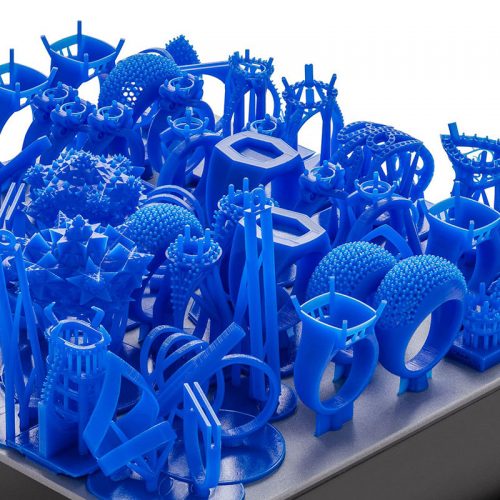 and just saying: “Look, we don’t want to go down the legal road but you guys are sharing a ton of stuff which is damaging to us. What can we do together to get these things off your platform without getting the lawyers involved? Here’s a sample list of stuff we think is infringing and here are the models they infringe against, see what we mean? Let’s go for a beer and hash this out.” Perhaps that’s just more of an Australian approach.
and just saying: “Look, we don’t want to go down the legal road but you guys are sharing a ton of stuff which is damaging to us. What can we do together to get these things off your platform without getting the lawyers involved? Here’s a sample list of stuff we think is infringing and here are the models they infringe against, see what we mean? Let’s go for a beer and hash this out.” Perhaps that’s just more of an Australian approach.
GW, This is a difficult time for you in that 3D printing is a new big change you need to navigate. But PR-wise, now is not the time to act like a bully. Maybe there’s some legal reason you needed to take the approach in the way you did, but please at least be open with the community you’ve created and make an address directly in response to 3D printing and Warhammer.
Try to get people on your side a bit more than you are. Leaving us in the dark in regard to your intentions is not conducive to building or maintaining our loyalty.
Just be more open with us, please.
I love creating things. I love the style of GW’s products along with their games and hobby tools. I also love 3D printing. My personal favourite part of blending the two hobbies is printing parts which I can use on my Games Workshop models. I did this for almost all of my Horus Heresy Legions.
But after I went on a 3D printing spree of parts, GW (via Forgeworld) start releasing their own legion-specific heads and shoulder pads. Some of which are very similar to 3D printed parts I downloaded weeks before these parts were even revealed.
So now I kinda feel bad. On one hand, I have some cool and unique parts which have come off my Phrozen Mini 8K in higher quality (sharper detail) than the retail GW counterparts, but have I now participated in copyright infringement, which genuinely I never wanted to do?!
My personal take on this is that anyone creating like-for-like, or even distinctly similar, models to GW sculpts is being really naughty. This is blatant IP theft in my book.
This is blatant IP theft in my book.
Whilst I appreciate Cults 3D’s take on this is to protect the creator, whether a model is chargeable or not, a rip-off of a design is a rip-off of a design. If GW make a model and an independent 3D modeller creates something clearly intended to be the same model, whether people can pay for that model or get it for free shouldn’t matter. It is potentially damaging to Games Workshop as a business and it should not be allowed from a legal standpoint. Cults should take it down.
Remember in school where you’d copy your mate’s homework and change it around a bit? yeah, not ok. plagiarism is something we learn about as children. It shouldn’t be ok in digital 3d model form either without the original creators’ express consent.
Sorry, it’s gonna be an unpopular opinion with one side of this audience no matter which way I go, and well, these are my thoughts on it.
But, 3D printing does exist and it has the potential to enhance our hobby with cool and unique models & components. And components are where I feel GW is sorely lacking in the quality of options, with their sub-par Primaris upgrade sprues and even the recent Heresy components. GW can and have done better. See the Black templars upgrade sprue as a perfect example.
And components are where I feel GW is sorely lacking in the quality of options, with their sub-par Primaris upgrade sprues and even the recent Heresy components. GW can and have done better. See the Black templars upgrade sprue as a perfect example.
But then imagine if one person creates some shoulder pads, another a head, another a chest and someone else some legs. Before long you have all the parts to create a full Space Marine for free. So I get why GW are fighting 3D prints, and I’m genuinely surprised that they have done so little.
It makes me wonder, is this it? or is this just a first-wave.
There’s no putting the genie back in the bottle: 3D printing exists now. It already gives us higher detail on models than GW does. It’s still getting better, and is easy to get started with. But I don’t want GW to suffer at all, I want to see them continue to grow and give us more great stuff! So this whole situation is genuinely upsetting to see.
Digitisation is the future – whether we like it or not.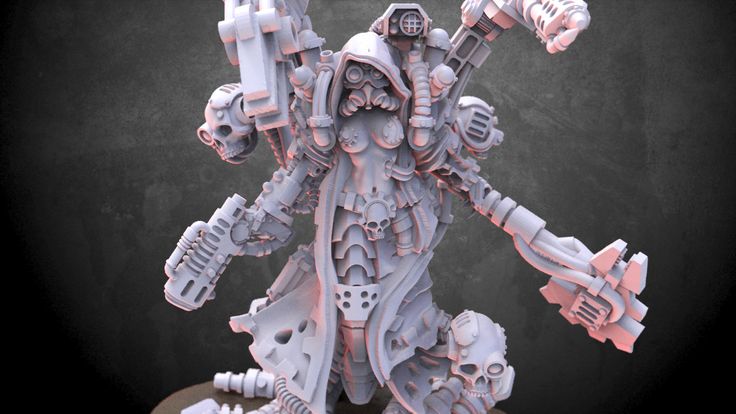 It happened to the music industry most famously and it resulted in music companies having no choice but to embrace the change. The business model completely changed but creators still create music for us to consume. First with companies like Apple and iTunes, but now any music track is available on-demand via Spotify.
It happened to the music industry most famously and it resulted in music companies having no choice but to embrace the change. The business model completely changed but creators still create music for us to consume. First with companies like Apple and iTunes, but now any music track is available on-demand via Spotify.
Next came movies and TV, and whilst anyone who is semi-tech savvy can easily still torrent or stream a movie, you still have Netflix who has grown to a company rivalling the behemoth that is Disney!
3D models are now coming into the digitised era. Games Workshop clearly has clearly being doing some amount of work so far in the removal of models which could deter their customers from buying direct or via an FLGS.
But I pray they have a larger team planning on how to incorporate the digital era into their business model in the coming years because the change is happening. And as more people come to realise what is available to them in the 3D printing realm, they are likely to be soon distracted from what GW provide in terms of model quality.
Whilst 3D printing will be far from Kill GW, I truly believe that unless they take control and ownership of 3D printing rather than fight against it. It could kill their lead as the premier model creator in our hobbysphere.
Here’s an Idea GW: be smart, make your own 3D printing platform, set some design rules then allow independent modellers to submit their creations to it. You moderate the content and take your cut.
Whenever does happen I just hope it leads us to get even more from GW and allows us to create awesome-looking cool miniatures to use in their games. A true waterfall approach to product releases.
As Bob Dylan famously said, the times they are a-chanin’.
Click this link & buy your hobby stuff from Element Games for the UK & Europe to support FauxHammer.com – Use Code “FAUX2768” at the checkout for double reward points.
15% off Phrozen with code: “22PRFHDP15“
Our Affiliates / Hobby Stores
- UK: Element Games, The Outpost, Wayland Games, Mighty Lancer, Goblin Gaming, Forbidden Planet, Model Scenery Supplies, eBay, Amazon
- US/Canada: MTechCave, GameKastle, eBay (US), eBay (CA), Amazon
- Germany: Taschengelddieb
- Europe: eBay (DE), eBay (FR), eBay (ES), eBay (IT), Amazon
- Australia: eBay, Amazon
- Global: RedGrass Games, Warcolours
- 3D Printers: Phrozen 3D
What did you think of this Article? please let us know in the comments.
If you like what we’re doing here you could really help encourage more content with a share on any social media platform.
Click the share links at the bottom of this screen (or on the left for computers and tablets)
Want to keep updated with the blog? You can subscribe in the sidebar for RSS or by email below
Email address:
(Sidebar is below the article on Mobile Devices)
Author
The 6 Coolest Games You Can 3D Print at Home
Now everyone knows about 3D printers and what wonders they can do. What you may not know is how much fun 3D printing is and how much fun it can be for your whole family and group of your friends.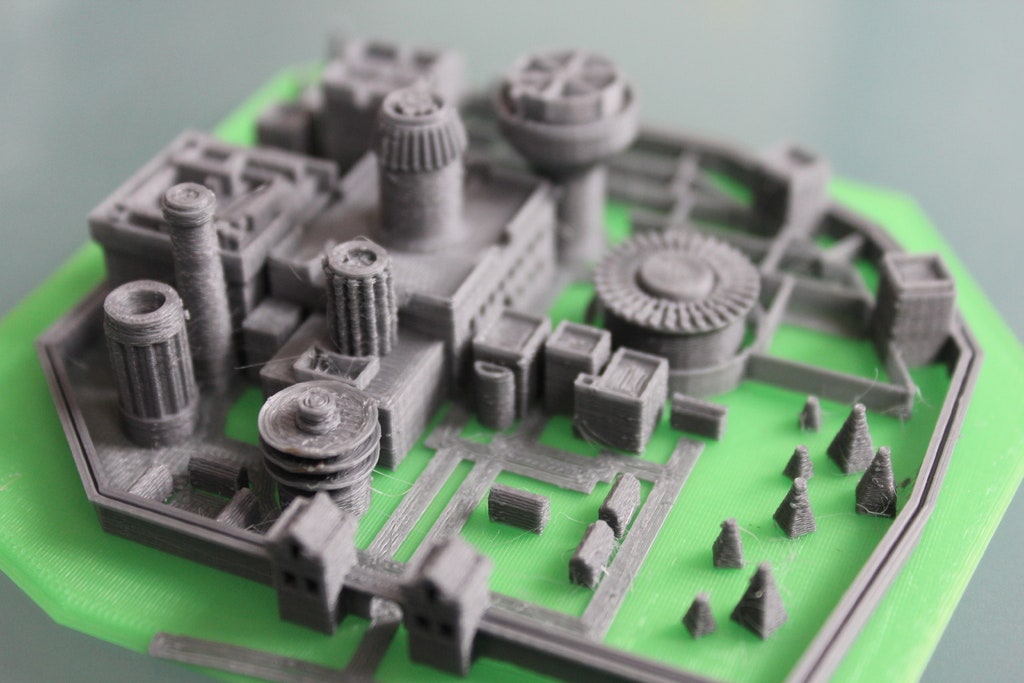 We're talking about 3D board games.
We're talking about 3D board games.
I know what you're thinking. “Man,” you ask, “how is it free if I have to buy a 3D printer? These things are worth thousands! »Firstly, you can get some pretty good 3D printers under $1,000 for $100 3D printer coming soon. Many schools now have 3D printers that you can use. Check with your library too.
You can also search local makerspaces or hackerspaces. hacker space. This is a kind of clubs, equipped with all sorts of wonderful technologies. It's a very inexpensive way to indulge in a new 3D printed hobby and maybe teach your kids your kid's DIY,
Let's look at just a few of the games you can play and enjoy.
If you like handheld games, fast play, zombies and a cute button, Zombie Apocalypse is for you. This is a game that can be played by 2 people of any age. The premise is simple. You have a human and you have 3 zombies. If you are a human, you need to move from one side of the board to the other in order to win. If you are a Team Zombie, you must trap people so that they can no longer move.
If you are a Team Zombie, you must trap people so that they can no longer move.
The game may sound familiar to you. This game goes back to the French military, where it was known as the Hare and the Hounds. Or that hare and hounds in French. Zombies equal hounds, and man equals hare.
Zombies go first, moving one zombie one space, but only forward or sideways. The person then walks, moving one position in any valid direction (indicated by the lines on the board). This goes back and forth until the person is all the way through or until the zombies block the person completely.
Printed samples are simple and easy to handle. The creator of AndyGadget has uploaded all the 3D printing files needed to create the game. It also provides container print files for all of this.
If you want to take this with you on family trips, I suggest sticking magnets to the bottom of your zombies and humans and cutting the metal pieces to fit into hexagons. You could even go one step further and do X and Os so you can play that on the middle part of the board.
You could even go one step further and do X and Os so you can play that on the middle part of the board.
This is for nostalgia. If you have a Commodore 64 or Atari, you've probably played Archon: Light and Darkness. If you're under 40, this game may have been the inspiration for Harry Potter's battle chess.
The game unfolds like chess, but when two opponents meet in Archon, the battle takes center stage and the winner enters the field. Sometimes there is even a double kill without a winner. To win the game, you must either take 5 power points on the board, destroy all of your opponent's pieces, or destroy all but one piece that you imprisoned.
How does this game make the jump from the screen to the table? It will apparently take 30 years, but Jimmy Wilhelmson did it. Much of the design was focused on accurately reproducing 2D 8-bit characters in 3D physical objects. When you look at them from the side, they appear just like on the screen. However, looking at them from other angles, it's still pretty clear who they should be. Creating this effect is more difficult than it seems.
Creating this effect is more difficult than it seems.
With the game jumping to the table, how do you play battles? As you copy pawns, knights and goblins attack quickly but weakly. Or how Dragons are very strong and have a ranged attack, for example? It looks like Wilhelmson didn't get it, but I'm sure you can create your own way of replicating battles and odds using dice. In this case, fleshing out the game will be a lot of fun.
In the meantime, download Archon [No Longer Available] to play on a C64 or DOS emulator. or try the updated version called Archon Classic on Steam.
Throk or Castle Checkers [No Longer Available]
If you like point-to-point turn-based strategy games, you'll love Troke. Also known as "Castle Checkers" or "Siege", Troke was a classic board game from 1956 and appears to have been discontinued in 1967.
Youmagine contributor Joe Larson remembered Throk and thought of him to recreate him and posted the design files for use. Once you read about how he plays, you'll want to give it a try.
Once you read about how he plays, you'll want to give it a try.
Each player moves “three different kinds of pieces (tower, wall, and ditch) across the board diagonally forward, straight, or sideways, but never back. In some versions of the game, points are scored for capturing the opponent's pieces and forming complete "castles" (tower, wall, and moat) on the player's goal line. Otherwise it's a race to see who can get all of their pieces to the goal line. A feature of the game is that if you merge with one or two different pieces, you make one or two extra moves. You are allowed to merge (capture) with enemy pieces and thus move them away from your target and towards your own. "
The game is complex, strategic, the 3D version has pieces and a board that is more pleasing to the eye than the original. How fun is that?
Seej [broken url removed]
Speaking of siege, it's only natural that someone would 3D print a game using classic siege machines like the catapult. Just the idea of having your own little catapults throwing balls or pennies shooting ballista is reason enough to print these files.
Just the idea of having your own little catapults throwing balls or pennies shooting ballista is reason enough to print these files.
The fact that there is a game aspect is just a bonus. It's a bit like capturing the flag, only the goal is to topple the flag. Players agree in advance which weapons can be used. You then set up three flags behind the walls and fortifications, which you set up as you see fit. You and the other player take turns shooting. The first player to knock over all three of the other players' flags wins.
Of course, there are other details in the game, but this is the main idea. Be careful playing this though. Apparently, ballistas "...can do some real harm to soft tissues." Perhaps there should be a file for printing a protective mask.
Nobody wants to hear about another 3D chess set. Chess is definitely a cool game, but come on! million downloads 3D chess. there. So why am I including this one? Well, that's nice.
Each piece is a tiny pot for growing a small plant. Do you know how everyone has chess sitting in the corner of the room, gathering dust? Print this and you have a single chess set that should have dirt on it.
Do you know how everyone has chess sitting in the corner of the room, gathering dust? Print this and you have a single chess set that should have dirt on it.
Think about it. How ideal would it be to have a cactus as a rook? Or a wise bishop? Maybe you could grow onions and parsley in them. Then, while your opponent is wasting time contemplating impending doom, you can snack on an onion. Then add some parsley to keep your breath fresh as you say "Check and mate".
We've saved the best for last: this is probably the coolest 3D printing game ever. From the mind of George R.R. Martin, land of Volantis, and Aryan Croft's computer from Pocket Tactics, Kivass arrives.
If you're a Game of Thrones fan, you'll know what Cyvasse is. If not, then that's okay too. The game stands on its own and you don't need to know anything about the books or shows to enjoy it. It just looks cool, even if you don't play it.
The game board may look like a chessboard, but it doesn't really look like one.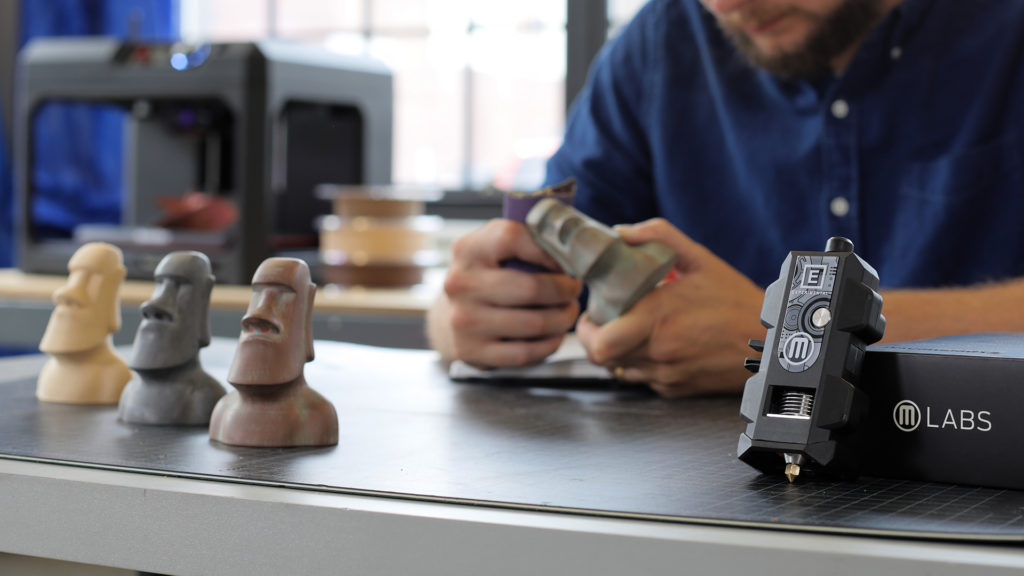 The barrier is placed in the middle of the board. Each player then places their strongholds and mountains on their side of the board. They then place their game pieces around their stronghold. All remaining game pieces remain hidden.
The barrier is placed in the middle of the board. Each player then places their strongholds and mountains on their side of the board. They then place their game pieces around their stronghold. All remaining game pieces remain hidden.
Now the game is starting to look a bit like chess. The two players take turns moving the pieces to their destination. Parts can be taken and the citadel. When the stronghold is taken, all hidden players are also taken. The game continues until the king is captured, whether the king is on the board or hidden in the fortress.
What game will you print?
3D printers are fun on their own. Making your own games and inventing them just makes them more fun. Will you print and make one of the games above? Have you found another game to print? Maybe you can create your own game from scratch. Whatever you do, you will get twice as much pleasure knowing that you had a hand in making it a reality. The game has begun!
Original Troke Game via Play Museum, Troke 3D Printed Game via Youmagine, Original Archon Game Cover, Archon on Commodore 64 via Wikimedia, Archon 3D parts via Wikimedia, Archon in 2D and 3D via Spelpappan, Mini Planter Chess via XYZ Workshop, Zombie Apocalypse Board Game via Instructables, Seej via Zheng3, George R. R. Martina Kiwass (unofficial game), via Thingiverse.
R. Martina Kiwass (unofficial game), via Thingiverse.
Using 3D technologies to create miniatures for board wargames.
Application
Subscribe author
Subscribe
Don't want
45
Hi all! Recently, I came across a very interesting project, and today I would like to talk about how 3D technologies are used in the development of a board game using this project as an example. The game is a battle between two small armies of soldiers, each of which has its own parameters and abilities. More details about the background, rules and other things can be found in the official group in Contact https://vk.com/hydrophilia or watch the video https://www.youtube.com/watch?v=snhEfM4wwAQ. Alexey, the author of the project, is not yet a member of our community, so I will retell on my own behalf.
Currently, 3D modeling and printing is mainly used to create miniatures of game characters, I will dwell on this in more detail.
Work on a miniature begins long before its appearance becomes clear. First of all, the characteristics and description are described so that the model fits harmoniously into the squad. Next, a sketch is created.
When the approximate appearance of the character becomes clear, he is given a certain pose. Further the character is modeled “cleanly”.
This is perhaps the most difficult and painstaking part of the work. At this stage, you need to immediately think about how the model will be cut into pieces. If you immediately lay down under this, further cutting will not be a big problem, otherwise preparing the model for printing can be torture. Here you need to immediately make a reservation that for different printers, some conditions in the preparation of the model differ.
After cutting, the model is sent to print. I want to say right away that the scale of the miniatures is very small, the miniature is only 35mm high. Alexey tried a lot of 3D printing technologies on a variety of professional equipment, including MJM technology on VisiJet Crystal and SLA technology on EnvisionTec equipment on LS 600 material. I wondered if the EGL3D EGL1 printer could compete with professional equipment, so I suggested printing its miniatures . Here's what came out of it:
Alexey tried a lot of 3D printing technologies on a variety of professional equipment, including MJM technology on VisiJet Crystal and SLA technology on EnvisionTec equipment on LS 600 material. I wondered if the EGL3D EGL1 printer could compete with professional equipment, so I suggested printing its miniatures . Here's what came out of it:
The quality turned out to be more than competitive in all respects. Although not the best photo, I will give a print of one of the characters on Envisiontec equipment from LS 600
After printing, the model must be reproduced, for this liquid plastic is poured into a silicone mold. Molding is also a process that requires skill. There are usually several details in one figure and it is not always possible to immediately assess how best to arrange them relative to the sprue. In some models, different parts have to be carried in different forms. Such a decision can be related to both the total number of parts and their configuration. As experience has shown, the larger the shape is, the more demanding it is to the sprue configuration.
As experience has shown, the larger the shape is, the more demanding it is to the sprue configuration.
The picture below shows one of Alexei's early forms, which had to be written off. 5 normal castings came out of it, then flash began to appear.
In addition, you can see that there is no reservoir in the mold where the plastic is poured. It had to be built up with improvised means. It took a lot of time and material to figure out which mold configuration was the best fit.
Next comes the actual casting process. Expensive high-quality Smooth Cast plastic is used. Despite the promises of the creators of casting plastic that it does not require vacuum equipment, it is still necessary. Without this, a large percentage of castings are obtained with small defects in the form of bubbles. A self-made vacuum chamber is used for degassing.
The master model with sprues and the result of the casting process is shown in the photo below:
After casting, the sprues are carefully cut off and the figure is almost ready.